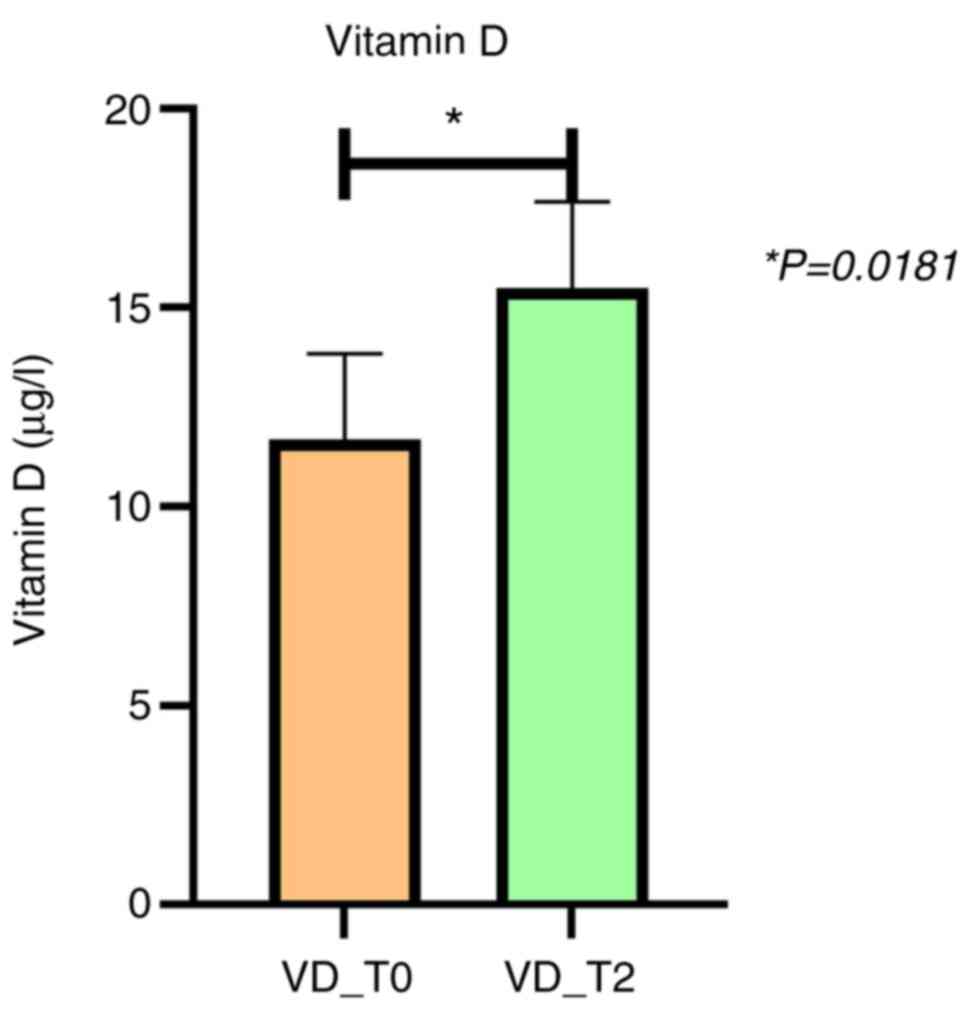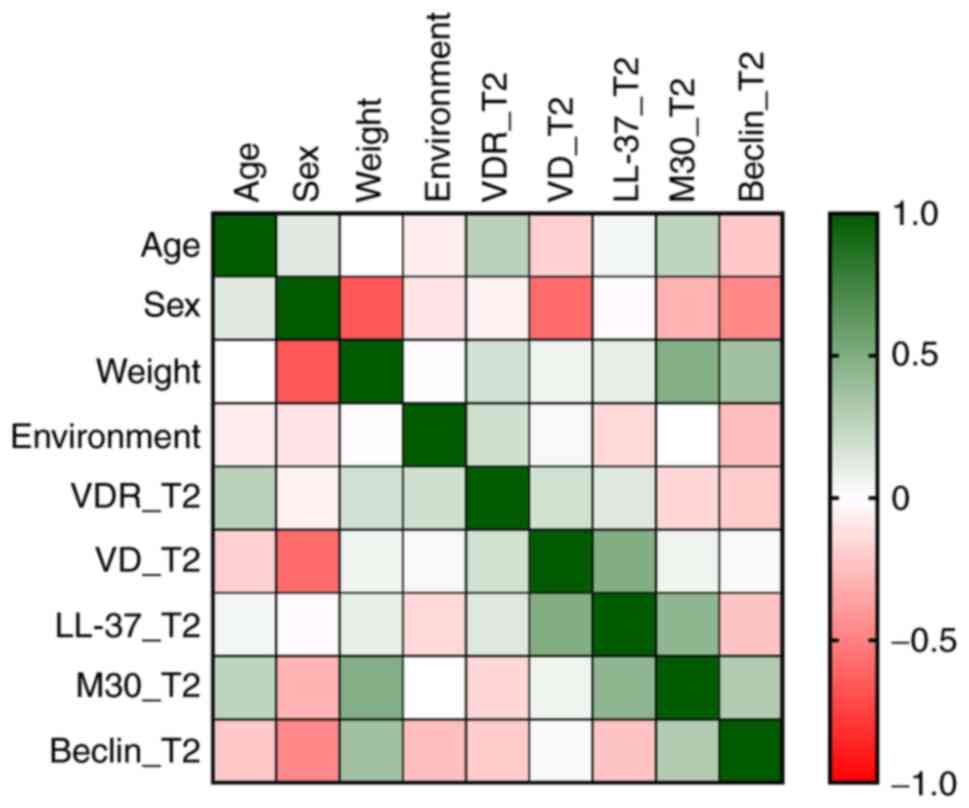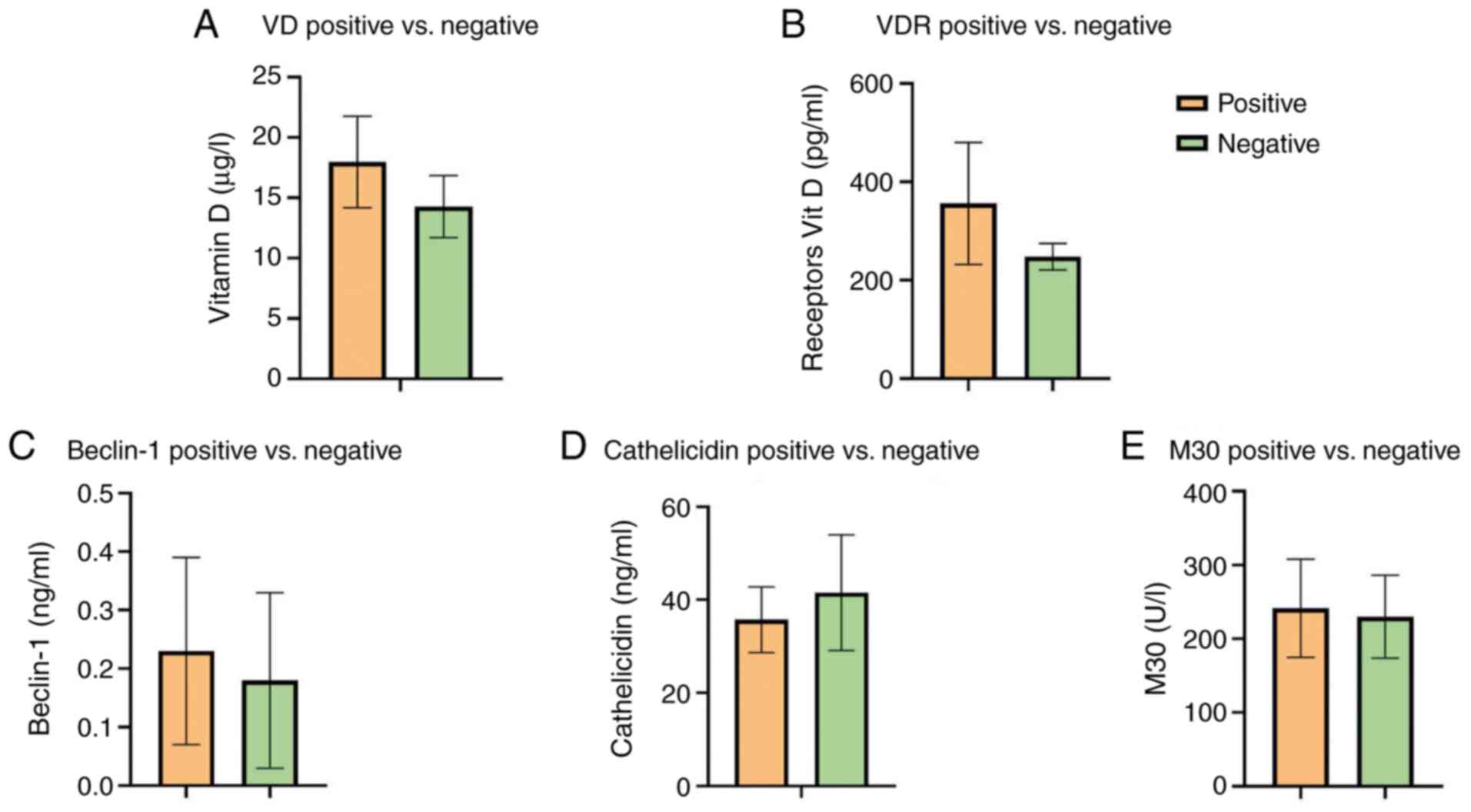|
1
|
Rekha RS, Mily A, Sultana T, Haq A, Ahmed
S, Mostafa Kamal SM, van Schadewjik A, Hiemstra PS, Gudmundsson GH,
Agerberth B and Raqib R: Immune responses in the treatment of
drug-sensitive pulmonary tuberculosis with phenylbutyrate and
vitamin D3 as host directed therapy. BMC Infect Dis.
18(303)2018.PubMed/NCBI View Article : Google Scholar
|
|
2
|
Geneva, World Health Organization: WHO
Global Tuberculosis Report. Geneva World Health Organization,
pp1-261, 2019. https://www.who.int/tb/publications/global_report/en/.
|
|
3
|
WHO Regional Office for Europe, European
Centre for Disease Prevention and Control. Tuberculosis
Surveillance and Monitoring in Europe 2018-2016 Data. World Health
Organization, pp181-182, 2018. https://www.ecdc.europa.eu/en/publications-data/tuberculosis-surveillance-and-monitoring-europe-2018.
|
|
4
|
Ashenafi S, Mazurek J, Rehn A, Lemma B,
Aderaye G, Bekele A, Assefa G, Chanyalew M, Aseffa A, Andersson J,
et al: Vitamin D3 status and the association with human
cathelicidin expression in patients with different clinical forms
of active tuberculosis. Nutrients. 10(721)2018.PubMed/NCBI View Article : Google Scholar
|
|
5
|
Jo EK: Autophagy as an innate defense
against mycobacteria. Pathog Dis. 67:108–118. 2013.PubMed/NCBI View Article : Google Scholar
|
|
6
|
Paik S, Kim JK, Chung C and Jo EK:
Autophagy: A new strategy for host-directed therapy of
tuberculosis. Virulence. 10:448–459. 2019.PubMed/NCBI View Article : Google Scholar
|
|
7
|
Balcells ME, Yokobori N, Hong BY, Corbett
J and Cervantes J: The lung microbiome, vitamin D, and the
tuberculous granuloma: A balance triangle. Microb Pathog.
131:158–163. 2019.PubMed/NCBI View Article : Google Scholar
|
|
8
|
Torres-Juarez F, Cardenas-Vargas A,
Montoya-Rosales A, González-Curiel I, Garcia-Hernandez MH,
Enciso-Morenzo JA, Hancock RE and Rivas-Santiago B: LL-37
immunomodulatory activity during Mycobacterium tuberculosis
infection in macrophages. Infect Immun. 83:4495–4503.
2015.PubMed/NCBI View Article : Google Scholar
|
|
9
|
Gupta S, Winglee K, Gallo R and Bishai WR:
Bacterial subversion of cAMP signalling inhibits cathelicidin
expression, which is required for innate resistance to
Mycobacterium tuberculosis. J Pathol. 242:52–61.
2017.PubMed/NCBI View Article : Google Scholar
|
|
10
|
Lam A, Prabhu R, Gross CM, Riesenberg LA,
Singh V and Addarwal S: Role of apoptosis and autophagy in
tuberculosis. Am J Physiol Lung Cell Mol Physiol. 313:L218–L229.
2017.PubMed/NCBI View Article : Google Scholar
|
|
11
|
Lee KS, Chung JY, Jung YJ, Chung WY, Park
JH, Sheen SS, Lee KB and Park KJ: The significance of
caspase-cleaved cytokeratin 18 in pleural effusion. Tuberc Respir
Dis (Seoul). 76:15–22. 2014.PubMed/NCBI View Article : Google Scholar
|
|
12
|
Mohareer K, Asalla S and Banerjee S: Cell
death at the cross roads of host-pathogen interaction in
Mycobacterium tuberculosis infection. Tuberculosis (Edinb).
113:99–121. 2018.PubMed/NCBI View Article : Google Scholar
|
|
13
|
Elliott TO, Owolabi O, Donkor S, Kampmann
B, Hill PC, Ottenhoff TH, Haks MC, Kaufmann SH, Maertzdorf J and
Sutherland JS: Dysregulation of apoptosis is a risk factor for
Tuberculosis disease progression. J Infect Dis. 212:1469–1479.
2015.PubMed/NCBI View Article : Google Scholar
|
|
14
|
Wang M, Kong W, He B, Li Z, Song H, Shi P
and Wang J: Vitamin D and the promoter methylation of its metabolic
pathway genes in association with the risk and prognosis of
tuberculosis. Clin Epigenetics. 10(118)2018.PubMed/NCBI View Article : Google Scholar
|
|
15
|
Chung C, Silwal P, Kim I, Modlin RL and Jo
EK: Vitamin D-cathelicidin axis: At the crossroads between
protective immunity and pathological inflammation during infection.
Immune Netw. 20(e12)2020.PubMed/NCBI View Article : Google Scholar
|
|
16
|
Ayelign B, Workneh M, Molla MD and Dessie
G: Role of vitamin-D supplementation in TB/HIV co-infected
patients. Infect Drug Resist. 13:111–118. 2020.PubMed/NCBI View Article : Google Scholar
|
|
17
|
Alford MA, Baquir B, Santana FL, Haney EF
and Hancock RE: Cathelicidin host defense peptides and inflammatory
signaling: Striking a balance. Front Microbiol.
11(1902)2020.PubMed/NCBI View Article : Google Scholar
|
|
18
|
Rode AKO, Kongsbak M, Hansen MM, Lopez DV,
Levring TB, Woetmann A, Ødum N, Bonefeld CM and Geisler C: Vitamin
D counteracts Mycobacterium tuberculosis-induced
cathelicidin downregulation in dendritic cells and allows Th1
differentiation and IFNγ secretion. Front Immunol.
8(656)2017.PubMed/NCBI View Article : Google Scholar
|
|
19
|
Xia J, Shi L, Zhao L and Xu F: Impact of
vitamin D supplementation on the outcome of tuberculosis treatment:
A systematic review and meta-analysis of randomized controlled
trials. Chin Med J (Engl). 127:3127–3134. 2014.PubMed/NCBI
|
|
20
|
Talat N, Perry S, Parsonnet J, Dawood G
and Hussain R: Vitamin D deficiency and tuberculosis progression.
Emerg Infect Dis. 16:853–855. 2010.PubMed/NCBI View Article : Google Scholar
|
|
21
|
Rajamanickam A, Munisankar S, Dolla CK and
Babu S: Diminished systemic and mycobacterial antigen specific
anti-microbial peptide responses in low body mass index-latent
tuberculosis co-morbidity. Front Cell Infect Microbiol.
10(165)2020.PubMed/NCBI View Article : Google Scholar
|

















